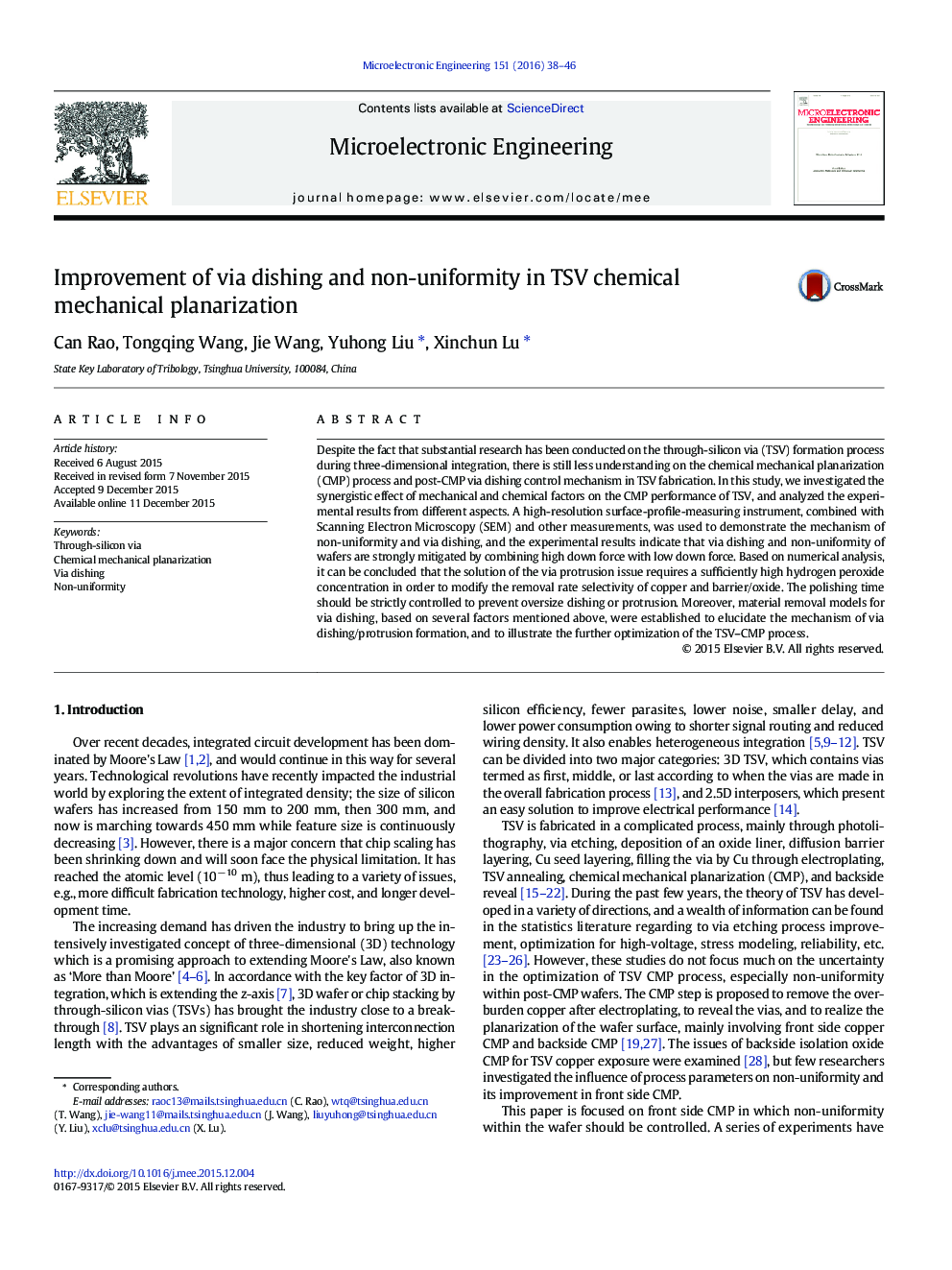| کد مقاله | کد نشریه | سال انتشار | مقاله انگلیسی | نسخه تمام متن |
|---|---|---|---|---|
| 539020 | 1450330 | 2016 | 9 صفحه PDF | دانلود رایگان |

• The synergistic effect of mechanical and chemical factors on the CMP performance of TSV was investigated.
• Down force and polishing time should be strictly controlled to guarantee high removal rate and low dishing.
• A sufficiently high H2O2 concentration is required to prevent via protrusion by modifying the selectivity of Cu/Ti/TEOS.
• Material removal models were established to elucidate the mechanism of via dishing/protrusion formation.
Despite the fact that substantial research has been conducted on the through-silicon via (TSV) formation process during three-dimensional integration, there is still less understanding on the chemical mechanical planarization (CMP) process and post-CMP via dishing control mechanism in TSV fabrication. In this study, we investigated the synergistic effect of mechanical and chemical factors on the CMP performance of TSV, and analyzed the experimental results from different aspects. A high-resolution surface-profile-measuring instrument, combined with Scanning Electron Microscopy (SEM) and other measurements, was used to demonstrate the mechanism of non-uniformity and via dishing, and the experimental results indicate that via dishing and non-uniformity of wafers are strongly mitigated by combining high down force with low down force. Based on numerical analysis, it can be concluded that the solution of the via protrusion issue requires a sufficiently high hydrogen peroxide concentration in order to modify the removal rate selectivity of copper and barrier/oxide. The polishing time should be strictly controlled to prevent oversize dishing or protrusion. Moreover, material removal models for via dishing, based on several factors mentioned above, were established to elucidate the mechanism of via dishing/protrusion formation, and to illustrate the further optimization of the TSV–CMP process.
Figure optionsDownload as PowerPoint slide
Journal: Microelectronic Engineering - Volume 151, 5 February 2016, Pages 38–46